Nick Launay on producing Idles, vintage tech and keeping the fire alive in the studio
After three decades producing the likes of Nick Cave and the Bad Seeds, Kate Bush, PiL, Arcade Fire and Idles, Nick tells us how he approaches unique musicians, and why attitude is just as important as technical proficiency.
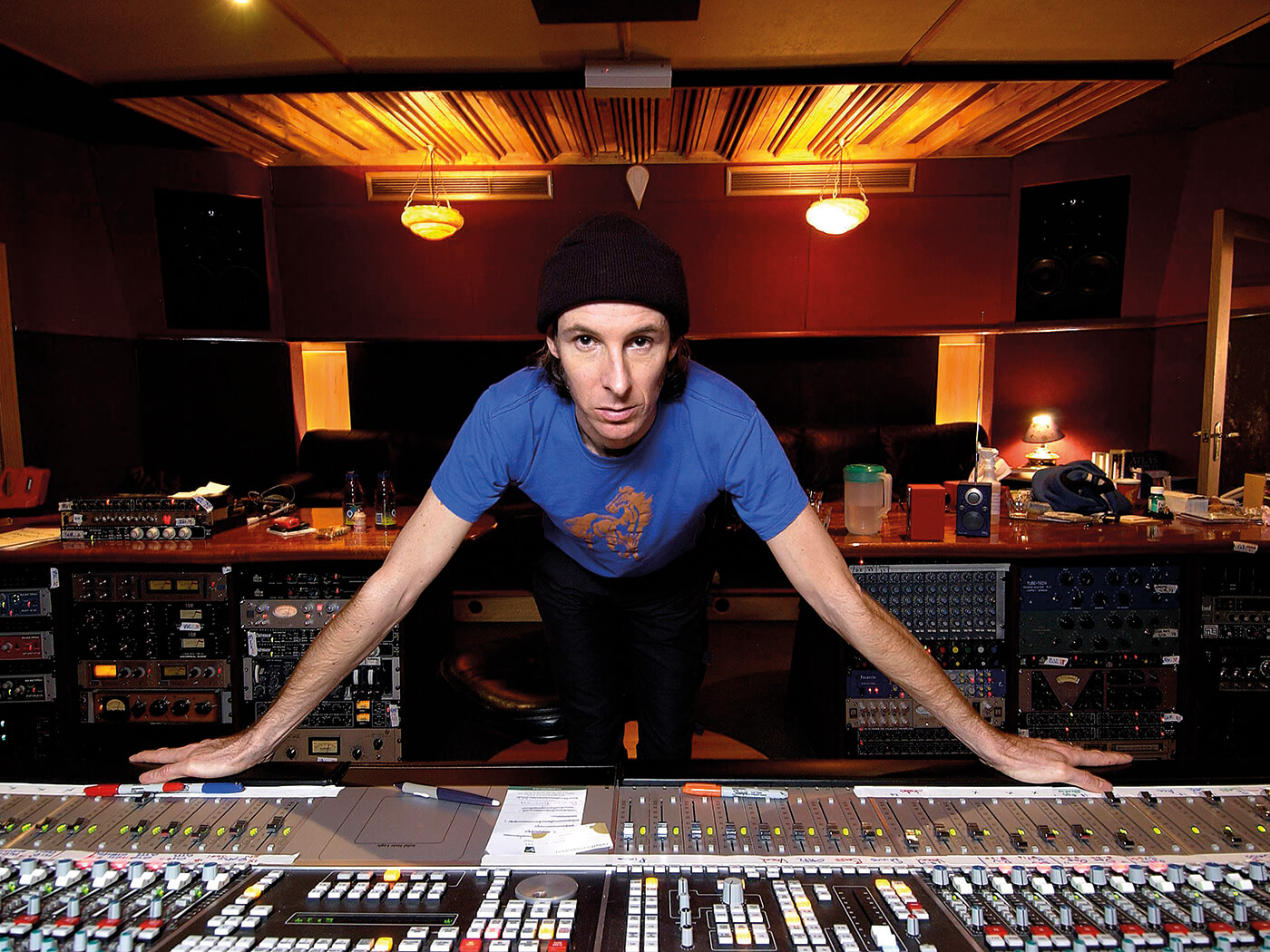
Image: Martin Philbey / Redferns
“No talk, more playing and less fucking around.” Lauded record producer Nick Launay is laughing while describing the rules he and Bristol punk act Idles adhered to on the band’s much anticipated new record Ultra Mono. It’s a maxim almost as succinct as the process itself. But it speaks volumes about his methodology and could be applied to any number of hit records Nick has worked on over the past 30 years or more.
Energy, vibe and volume. All are part of the winning formula the London-born producer has used across a discography that features powerful moments from some of the most daring artists in contemporary music. From early skirmishes with Public Image Ltd and John Lydon to a multi-record relationship with Nick Cave via tracks and albums with Arcade Fire and Silverchair, Nick’s catalogue bristles with an unrivalled artistic potency. He is as famous for enabling our most unique artists to express themselves as he is for prioritising raw edges over sonic perfection – and he seems noticeably drawn to the wilder ones.
“The music I make and work on is full of rebellion, passion and attitude,” he says from his home north of Los Angeles. “It’s always fascinating to experiment with sounds but, as the producer, you need to pay attention to the people in a room. Understanding the technical side is great but you need to know how to use it to bring out the right mood and attitude. My job as the producer is to capture that as best I can.”
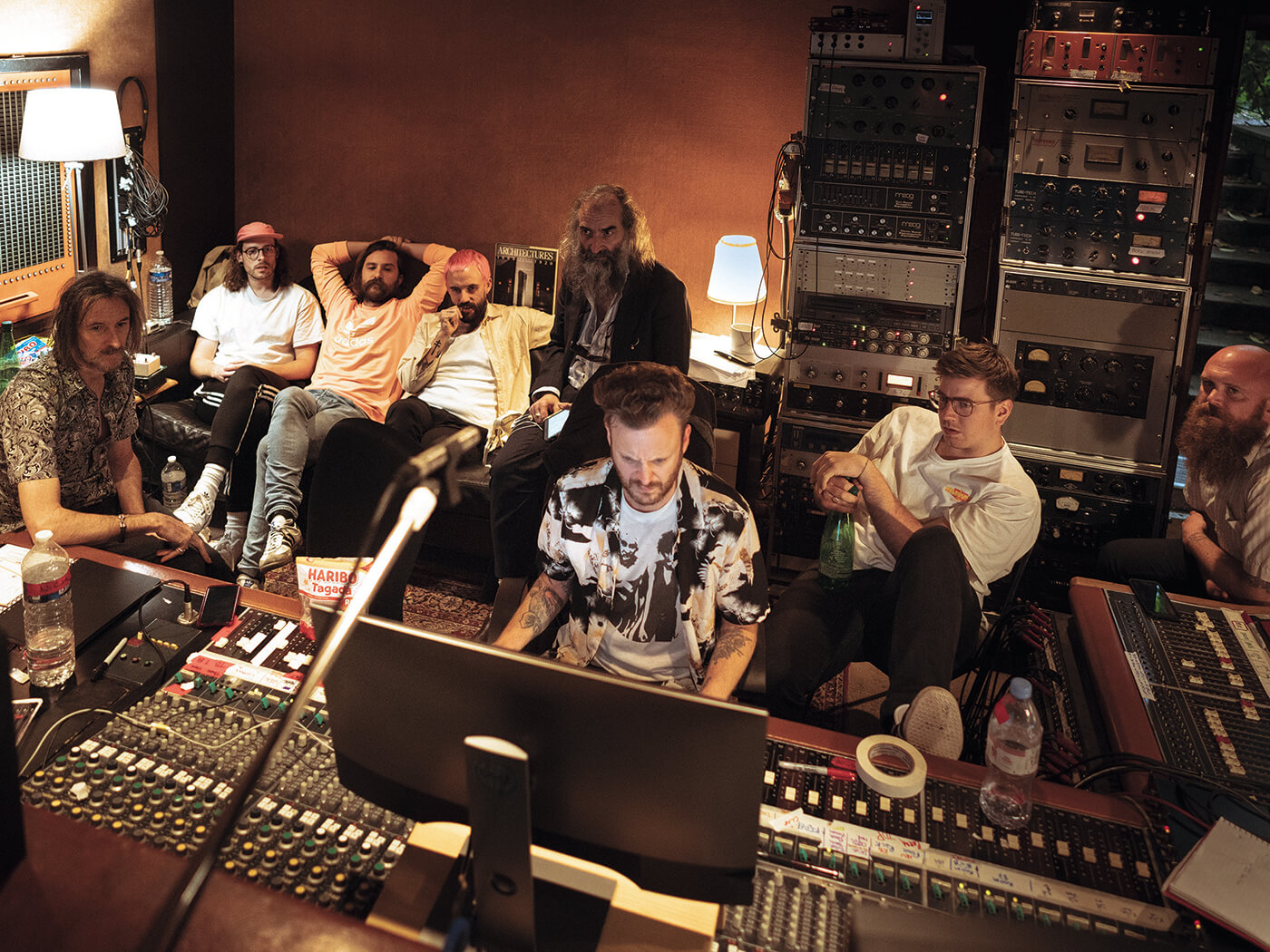
Cutting teeth
Nick’s musical obsession began at a young age, a habit fed by studying the music blaring from Radio 1 and experimenting with tape machines. Once he landed a job at Tape One on London’s Tottenham Court Road, the young Nick cut his teeth learning how to edit, duplicate and master records.
“I learned a great deal about the final stages of making records at Tape One editing and mastering studio,” says Nick. “My big break came when I created a 12-inch version of a song called Pop Music by M by editing and looping analogue tape. The artist, Robin Scott, heard it, loved it and released it. This was when I was 18. The song went to number one.”
From this pivotal moment, Nick’s ambitions ramped up with a renewed desire to work more closely with bands. His next move was to take a role at the legendary Townhouse, a studio then owned by the fledgling Virgin Records. His experience with tape held him in good stead.
“During the interview, the Townhouse’s chief engineer Mick Glossop was fascinated that I knew how to edit with tape,” says Nick. “He liked my enthusiasm too. I ended up getting the job. Within three months, I joined a session with PiL and John Lydon. All the other assistant engineers didn’t want to work it as they’d heard stories about John, how he’d throw tantrums and been verbally abusive.”
During recording sessions for what would be PiL’s Home is Where the Heart Is, the engineer struggled with the personalities and equipment in the room, giving Nick an unexpected opportunity to step outside his assistant role and really shine. “I kept having to get up and show him how this desk, a prototype SSL B Series, worked,” says Nick. “Then John said, ‘Nick, get your fucking chair and sit by the desk. You’re going backwards and forwards like a fucking yo-yo and you’re making me dizzy.’ I did that – and carried on fixing things every time the engineer couldn’t. He got up and left the room for a piss, then John went and locked the door with him outside and said, ‘Right, go on, make it sound good. You know what you’re doing.’”
With the engineer out of the picture, Nick ended up mixing the song himself. PiL loved the results, and he was asked to do the next record. Suddenly, as a 20-year-old, his career was in steep ascendance. “I was the youngest employee, so the Townhouse manager met me beforehand and asked if I knew what I was doing,” says Nick. “I lied, said I did, made the record, and it was really popular. John mentioned me in the press, and before I knew it, I was getting calls from Killing Joke, Gang of Four, The Birthday Party and The Slits to work on their music. It was wild, but when you’re young like that, you just go with it. Enthusiasm and passion got me through.”
Idle hands
Fast-forward almost 40 years, and Nick’s career is in rude health. His latest record is Ultra Mono from Idles, the most-anticipated album to date from a group rapidly becoming one of the UK’s most brutal and exciting guitar outfits. The punk band’s songs, which explore politics, vulnerability and 21st-century masculinity, cut like meat cleavers thanks to stark lyricism, buzzsaw guitars and an unhinged demonic delivery and attitude. “It’s a monster of a record,” says Nick. “It sounds big and tough, and I’m really happy with it. They are such a band of characters, with a strong image and aesthetic. Working with people like that makes it so much easier to make a record.��”
The band’s previous record Joy as an Act of Resistance was the start of their creative relationship with Nick, with him mixing four of its tracks. This time around, schedules aligned to enable Nick to get more involved, alongside co-producer Adam Greenspan. The album was recorded in 10 days at the La Frette residential studio north of Paris. Nick’s reputation for working quickly is well known, but this was a fast pace even for him. “A few more days would have been great,” he says. “But the band is like a punk-rock military operation. Everything is very regimented. Joe, the singer, is very fucking funny. He’s very impatient so everything has to be done quickly or he gets pissed off. He’s the sweetest guy but you feel like he might want to beat you up if things don’t get moving quickly.”
Nick’s collaboration with Idles is still in its infancy compared to some of the studio stints he’s enjoyed with other artists. Nick Cave is perhaps the most monolithic talent that Launay has worked with the most, through various incarnations, from the gothic thunder of The Birthday Party to the garage rock of the Grinderman records. Every recording experience has been unsurprisingly rich in inspiration and astounding musicianship.
“When Pro Tools came out, I hated it. It just sounded terrible. But then it improved and I started enjoying it”
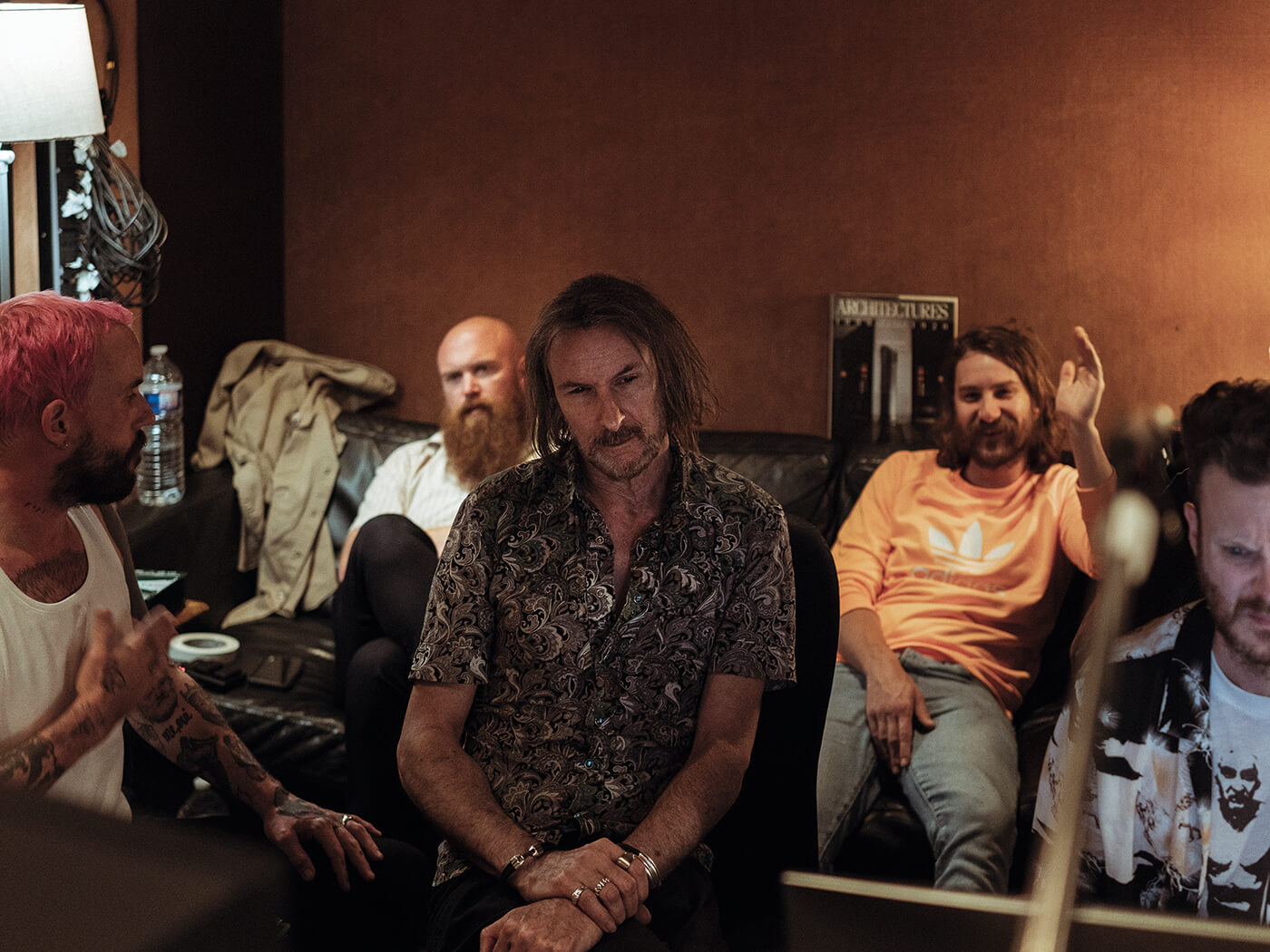
“On many of the albums I did, nothing was talked about, worked out in advance or premeditated,” says Nick of The Bad Seeds recording processes. “There are usually no demos and we don’t usually rehearse either. Their album Push the Sky Away is a good example. That record was made in a week. The second week we did overdubs, and then, during the third week, we took those overdubs off. Simplicity sometimes works better.”
Before an album is recorded, Nick will usually find a suitable studio, then spend a couple of days setting up the gear and fine-tuning equipment before the band arrives. “Nick Cave’s vocal mic is by his piano,” he says. “It’s not a guide but for his actual vocals. Most of what we’ve used are the original vocals he’s performed during takes, which is unusual. This is how records were made in the 1960s.”
“When the band are all at their instruments, Nick [Cave] will arrive and go straight to the piano, then light a cigarette and say, ‘Is everyone here? Okay, this song goes like this,’ and play a few chords. From there, these incredible musicians will just try and pick up the music. They’ll hear the vocal, then work out the right chords to play around it to avoid treading on it. The songs almost arrange themselves as they’re being played. It’s all about capturing the feeling in the room.”
The band usually perform a couple of takes then get bored before the producer cajoles them into doing one or two more. “The first take is a cacophony. With the second, everyone has more of an idea so they’ll go for it and the vocals will be amazing. They might do a third if I’m lucky but by the fourth Nick is bored. We usually use the second take because it has the best vibe, maybe add a few things in, overdub and that’s it.” While the band are a creative tour de force, Launay has got to know their various characters well too, which helps him prepare the perfect space for them to play in. “I know how they might behave and react to each other. I’ve got to know what Nick loves and loathes. There’s always a lot of joking. These sessions are very humorous. I often wish all records could be made like this.”
“You can’t let things get bogged down. It’s good to experiment but not to the detriment of musicians”
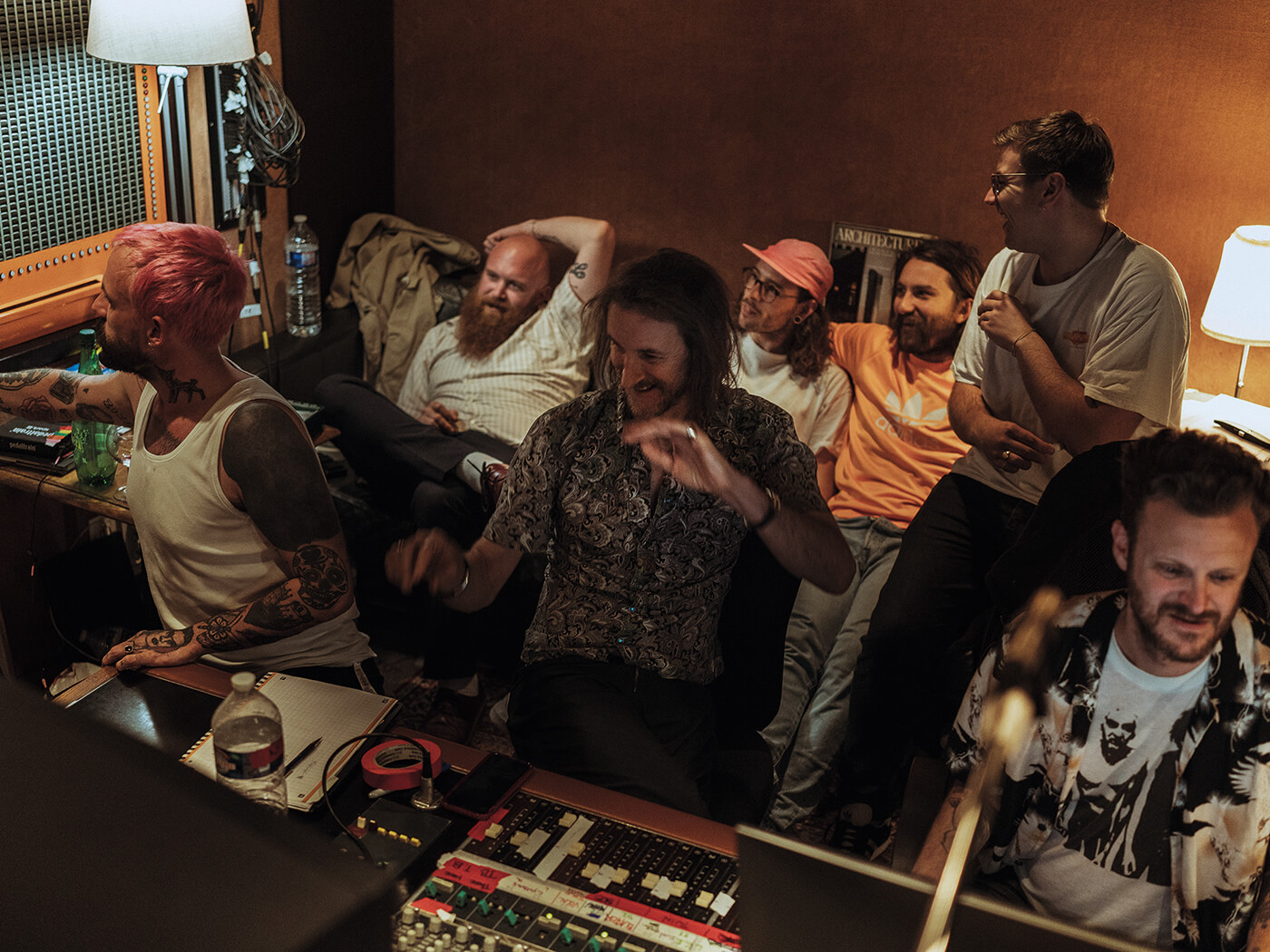
Sound choices
Nick has a preferred list of equipment and gear requirements for working with bands, as well as a tried-and-tested process, though there’s always room to burn the rulebook due to the unpredictable nature of the artists he records with. “With bands like Idles, Grinderman and the Yeah Yeah Yeahs, I’ll try and find a great studio with an API or Neve Desk, preferably from the 1960s or 1970s,” he says.
“My favourite Neve desk is one with the 1081 mic preamps and equalisers with 4-band EQ. A lot of the earlier Neves had limited frequency choices, so I’m keen to find a desk with higher-frequency selectors. These vintage desks distort in a really cool way. Everything sounds really fat, and clean at the top end. If the top end gets too loud, like with hi-hats, a Neve can handle it.”
This flexibility means there are fewer limitations in the studio when working with bands such as the Bad Seeds, who never have a musical map to follow. The wildness of the live performance, with its raw and improvised elements, is what makes their music so blistering – and it can be recorded in this kind of environment without losing any of its vitality.
“To capture a band like the Bad Seeds, you need to go through a desk with channels that have a lot of headroom,” says Nick. “If they play really loud, it’s not going to distort in a nasty shrill way and, equally, if it’s quiet, there isn’t too much noise coming from the desk.” Alongside the vintage Neve, the producer has an affection for specific microphones, including the Neumann M49 and M48. “They sound big and honest and capture a lot,” he says. “I also like to use dynamic microphones, like Shure SM57s and Beyerdynamic M88 TGs, to get tough distorted sounds. With equipment, it’s not always the expensive stuff that’s the best. The cheap stuff can be great and offer plenty of character too.”
Nick has seen a great deal of change within the industry, both in the way records are made and consumed. The shift has led to significantly smaller recording budgets for bands, which has had a knock-on effect on his process. “If I went back to the 1980s and looked at records made by new bands, on average, many budgets would be about £300k. Now your average new band has about £30k, so it’s trickier to piece together.”
Nick has made the adjustment by doing basic tracking at a vintage studio such as Sunset Sound in LA, then perfecting the final mix using his home setup. “I have a couple of microphones, including a really good vocal mic, a Tube-Tech compressor, and a fully rigged Pro Tools setup with lots of UAD plug-ins. It means I can mix a whole record at home.”
Initially, Nick admits to distrusting digital’s intrusion into the analogue recording world. At first, he tried to ignore Pro Tools, sticking with analogue for some time before embracing the new mode of record production. “When Pro Tools came out, I hated it,” he says. “I just thought it sounded terrible. But then it improved, and I started enjoying the editing functions. There was so much you could do with it that you couldn’t in analogue. I could give up the warmth of sound – then the budgets started coming down, and you couldn’t afford to use tape. Analogue wasn’t perfect. But somehow, if you got the right desk, tape and tape machine, and you got it working well together, it could be unbeatable.”
Does it stick?
Nick has a trusted way of working with bands and artists, both new and those with decades-long careers behind them. Initially, it revolves around whether the songs stir something in him. “Artists could be emerging or established, but if the songs don’t resonate, I won’t do the record,” he says. “I often get demos and think, ‘I’ve got to do this’ but then turn them down because the songs don’t stick.”
After listening to the songs, Nick notes down their structures in bar counts to visualise the music, then comes up with potential suggestions for alternate arrangements. “We have a meeting beforehand, exchange ideas, then go into rehearsals, where we try everything out,” he says. “We pull the songs apart and, if they don’t sound better, we revert to the originals. It’s all about pushing the imagination. Rehearsal time is cheap so most bands have a decent amount to experiment with. It means that, once we go into the studio, our focus is all about getting great takes.”
Nick cites his time at Tape One as the musical grounding he needed to learn how best to finesse and improve arrangements. “It taught me everything about song structures, which bits could be removed and which would work,” he says. “It came in really useful when I started producing records because, even though I was working with left-field acts, I could help bands laser in on structure to make their songs much more focused.”
Nick’s time on the darker fringes of rock ’n’ roll has given him plenty of experiences. Tastes and technology may have come and gone, but the route to iconic music fundamentally remains the same: musicians have to effectively convey their emotions, whether they aim to tug on heartstrings or to inspire anger.
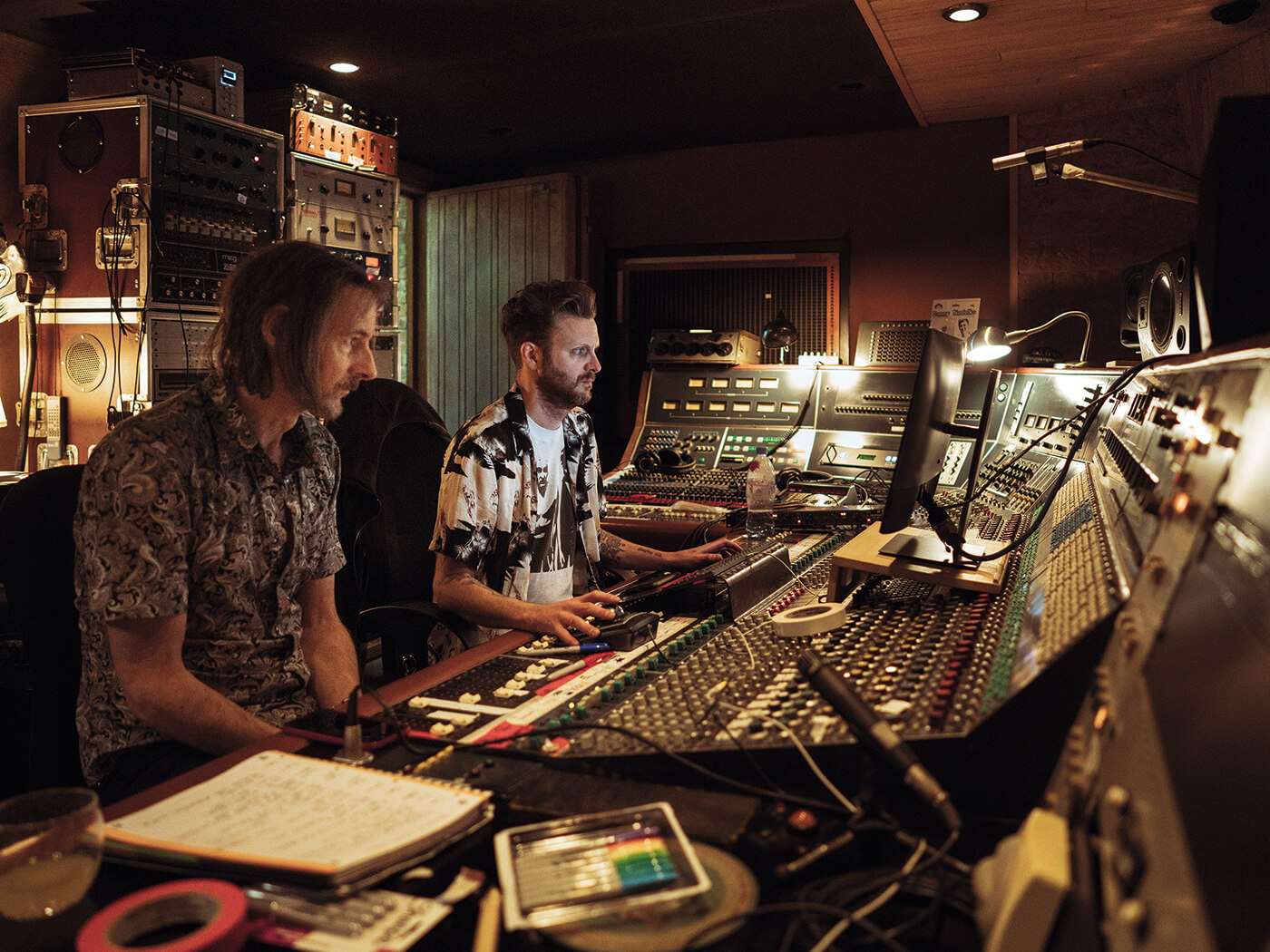
While he values technical expertise, Nick’s moved more by musical passion and anarchy in the studio. He believes every artist should be treated uniquely and that the producer needs to get under the musical fingernails of each one to effectively understand them and their primal urges. “A good record is one that touches and moves the listener,” he says. “It can be angry and distorted or melancholy and sad. Your role as a producer goes beyond mere tech. It’s good to know the tech but it’s only useful when you use it to capture feeling, mood and attitude.”
When working and recording in the studio, Nick feels it’s essential to maintain momentum to prevent musicians from getting bored. “This isn’t talked about enough, but the attitude of a record is very important,” he says. “Don’t get bogged down with equipment. It’s good to experiment with guitars and effects but not to the detriment of the musicians, who might become restless and not give their all when it comes to playing.”
Alongside the likes of the Bad Seeds, the inspired art-punk of the Yeah Yeah Yeahs and youthful grungers Silverchair, Nick has also worked with iconic solo artists such as Kate Bush, on her legendary album The Dreaming, and Anna Calvi, on her third LP Hunter.
Working with individuals requires different skills. “I’ve been very fortunate to work with both Kate and Anna,” says Nick. “When working with a solo artist, the palette of musical ideas needs to be huge – it’s not limited to just their sound. Kate and Anna are both in their own world of make-believe, so it’s all about making their ideas a reality.”
Ultimately, whether it’s a band or solo star, Nick believes that his role is to help creatives release their musical dreams into the wider world. “Artists are imaginative, eccentric people,” he says. “You need to join them on their journey, as they’ve probably spent the past eight months writing these songs. Most artists, the eccentric and interesting ones, they have great stuff in their heads. They just need help getting it out.”
Visit launay.com for more information. Idles’ Ultra Mono is released 25 September.